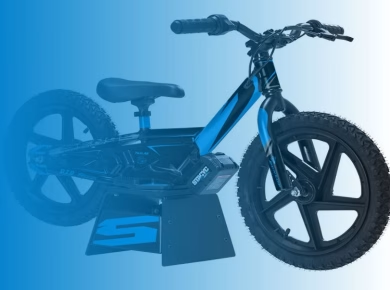Air tools are invaluable in a variety of industries, from woodworking to automotive repair, and their effectiveness hinges on proper maintenance. Just like any other tool, air tools require a bit of love and care to ensure they not only function optimally but also last for years. Neglecting air tool maintenance can lead to costly repairs or replacements, which is something no one wants to deal with. In this article, we’ll explore practical tips for prolonging the lifespan of your air tools, ensuring they remain reliable companions in your projects.
Understanding Your Air Tools
Air tools, often referred to as pneumatic tools, use compressed air to operate. This includes a wide range of equipment such as air drills, nail guns, sanders, and impact wrenches. Each tool has its specific needs, but they also share common maintenance practices that can enhance their durability. Before diving into maintenance tips, it’s essential to understand the basic components of air tools. Most consist of a motor, a trigger, and various attachments. Understanding how these parts interact can give you insight into where potential issues may arise.
Regular Cleaning: The First Step in Maintenance
Cleaning your air tools should be a regular part of your routine. Dust, debris, and moisture can accumulate and cause significant damage over time. Start with a simple cleaning routine: after each use, wipe down your tools with a clean cloth. For tools that have air intakes, make sure to check for any blockages. Compressed air can also be used to blow out dust and particles from internal components, but be cautious and wear protective eyewear to avoid debris flying into your eyes.
Dealing with Moisture
One of the biggest enemies of air tools is moisture. When compressed air is generated, it often contains water vapor, which can lead to rust and corrosion within the tool. Investing in an air compressor equipped with a moisture trap is a smart move. Additionally, regularly draining the moisture from your air compressor’s tank will help mitigate this issue. If your tools have moisture filters, check and replace them regularly to keep your tools dry and functioning well.
Lubrication: Keeping Things Running Smoothly
Proper lubrication is crucial for the longevity of air tools. Most air tools require regular lubrication to ensure that all moving parts operate smoothly. Many manufacturers recommend using a specific type of oil, so always refer to the user manual for guidance. A general rule of thumb is to lubricate your air tools every few hours of use. A few drops of air tool oil in the air inlet before using the tool can go a long way in reducing friction and wear.
Choosing the Right Oil
Using the right lubricant is essential. Some air tools require a non-detergent oil, while others may need a specific formulation designed for pneumatic tools. Always opt for high-quality oils designed specifically for air tools. Using motor oil or household oils can lead to build-up and ultimately damage your tools.
Inspecting and Replacing Parts
Regular inspections of your air tools can help identify wear and tear before it becomes a major issue. Check for cracks, leaks, or any other visible signs of damage. Pay particular attention to rubber seals and gaskets, as these are critical for maintaining optimal performance. If you notice any parts that seem worn out, it’s best to replace them promptly. Not only does this prevent further damage, but it also ensures that your tools operate safely and efficiently.
Understanding Common Issues
Air tools can develop various issues over time, such as loss of power or air pressure. Understanding these common issues can help you troubleshoot effectively. For instance, if your tool isn’t reaching the desired pressure, it may be due to a clogged air filter or a leak in the hose. Familiarizing yourself with the common problems can save you time and frustration in the long run.
Utilizing the Right Accessories
Accessories play a significant role in the performance of air tools. Using the correct fittings, hoses, and connectors ensures that your tools receive the right amount of air pressure. Cheap accessories may seem tempting, but investing in high-quality components can prevent leaks and prolong the life of your tools. Make sure to regularly check these accessories for wear and replace them as necessary.
Choosing the Right Hose
The hose you use is just as important as the tools themselves. A hose that’s too small can restrict air flow, while one that’s too large may lead to a loss of pressure. Additionally, avoid kinking or twisting the hose as this can cause interior damage. Ensure the hose is rated for the pressure you’re using and that it’s compatible with your tools.
Storing Your Tools Correctly
How you store your air tools can significantly affect their longevity. When not in use, keep them in a dry, clean environment. Consider investing in a toolbox or a dedicated storage cabinet to protect them from dust and moisture. Hanging tools on a pegboard can help keep them organized and easily accessible, but ensure they are stored in a way that minimizes the risk of physical damage.
Seasonal Care
Depending on your climate, seasonal changes can also impact air tool maintenance. In colder months, for instance, condensation can form in your compressor and tools. Before storing them for the winter, ensure they are clean and dry. Consider running the tools briefly to ensure any moisture is expelled before storing them away.
Educating Yourself on Tool-Specific Maintenance
Different types of air tools may require unique maintenance practices. For example, nail guns may need specific attention to their firing mechanisms, while sanders might need frequent replacement of sanding pads. Always take the time to read the user manual and follow the manufacturer’s recommendations for maintenance. Engaging in forums or communities dedicated to your specific tools can also yield valuable insights from other users.
Staying Updated with Technology
Air tool technology is continually evolving, and staying informed about the latest advancements can provide you with better maintenance strategies. Many manufacturers now offer digital tools that can help monitor performance and diagnose issues. Embracing these innovations can help you maintain your tools more effectively.
Conclusion: The Lifelong Benefits of Air Tool Maintenance
In summary, maintaining your air tools is not just about keeping them operational; it’s about investing in their longevity and reliability. Regular cleaning, lubrication, inspections, and proper storage can extend the lifespan of your tools significantly. By understanding your tools and following specific maintenance practices, you can avoid unexpected breakdowns and costly repairs.
Taking care of your air tools reflects a commitment to quality work and safety. So, roll up your sleeves and make air tool maintenance a part of your regular routine. The effort you put in today will pay off in reliable performance and years of service tomorrow. After all, a well-maintained tool is not just a tool; it’s an extension of your craftsmanship.


